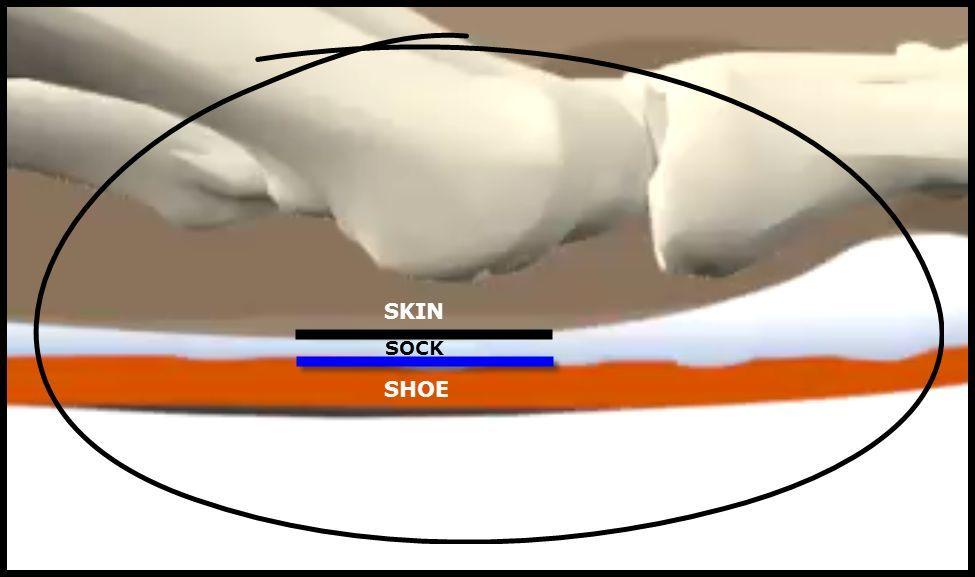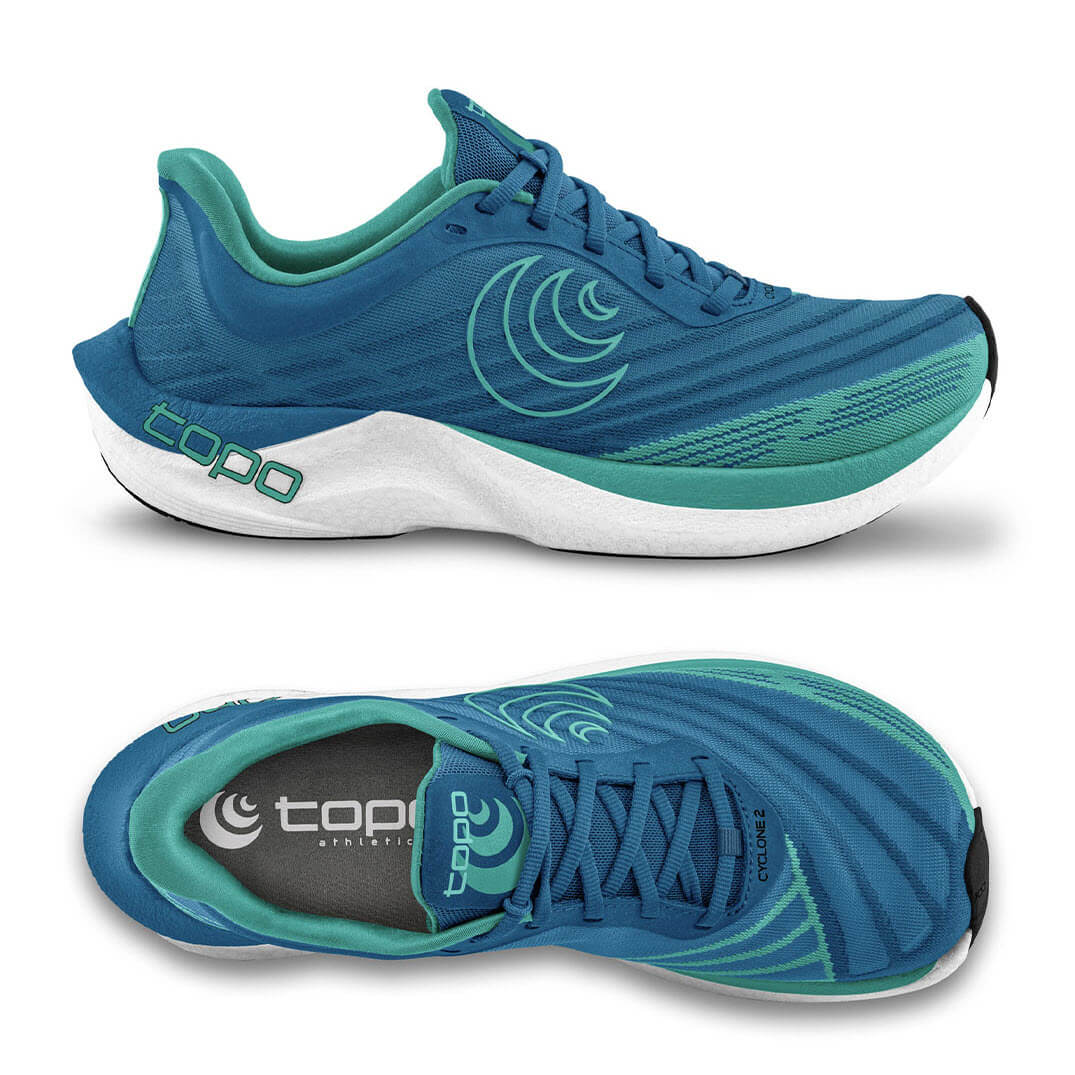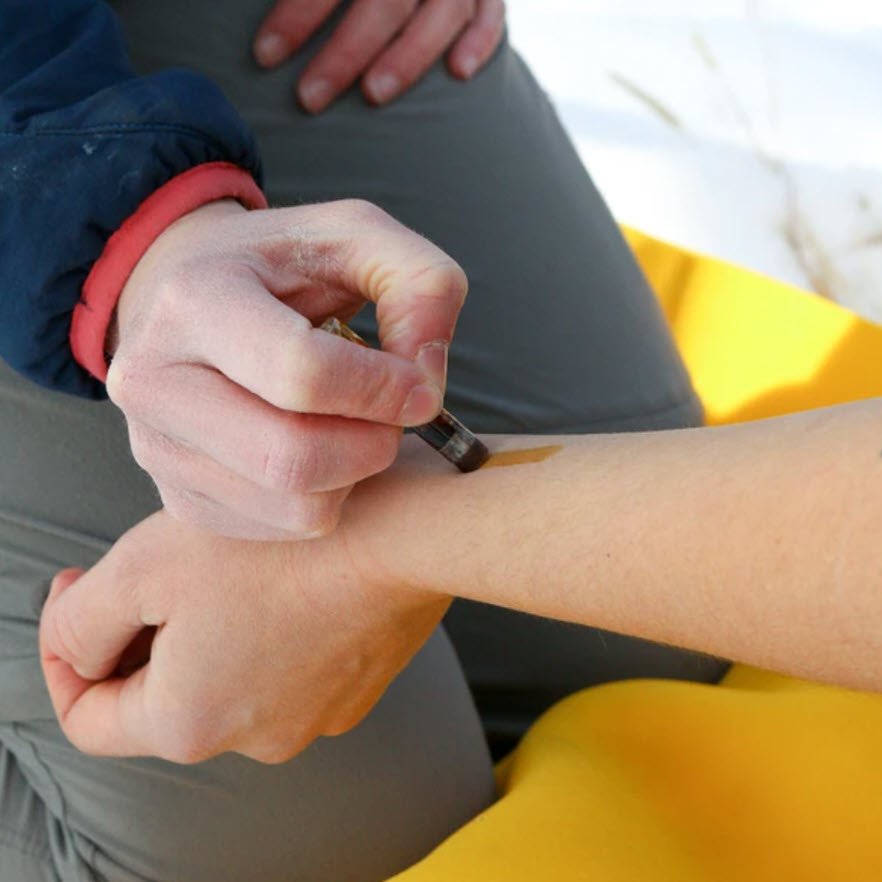Blisters are one of the most common injuries in sport and in everyday life. Yet blister care outcomes remain mixed at best. It's surprising that blisters have been the focus of so little research (Richie, 2010). More research is needed. But some research has gone unnoticed. I refer to research from the O&P profession (Orthotics and Prosthetics). Sometimes it helps to look at a problem from a different perspective. That’s what the O&P inventors of ENGO Patches must have done. Because ENGO Patches approach blister care in a whole new way. While most blister prevention strategies are applied to the skin, ENGO applies to the shoe.
Blister care and interfaces
An interface is where two surfaces meet. Blister prevention and blister care usually takes the form of something applied to the skin, such as tapes, dressings, powders and lubricants. That is, these strategies work at the skin-sock interface (black line). The other interface is the shoe-sock interface (blue line). This is where something is applied to the shoe, insole or orthotic. An example of this is ENGO Patches.

Management at the shoe-sock interface is an under-utilised approach.
There are 3 disadvantages of blister care applied to the skin
- It disperses into the sock (powders, lubricants)
- Perspiration dilutes it (powders, lubricants)
- Wear & tear and perspiration make it come unstuck (tapes, dressings)
Blister care at the shoe-sock interface needs to ...
- adhere exceptionally well in spite of wear & tear and moist in-shoe conditions
- be long-lasting
- markedly reduce friction levels
These extra features would make it exceptional:
- It doesn’t alter shoe fit
- Targets high friction areas only (because not all friction is bad!)
- It maintains low friction levels no matter how sweaty, damp, clammy, moist, wet, saturated or water-logged the skin gets

ENGO Blister Patches reduce friction levels between the shoe and the sock.
ENGO Blister Patches ticks all of these boxes!
The shoe-sock interface holds huge potential for blister prevention. One of the main advantages is the potential for a truly long-lasting effect. Weeks to months as opposed to a day or three, without having to reapply it (that's the annoying thing with tapes, powders and lubricants). Not only do ENGO Patches prevent blisters, they provide immediate friction relief to hotspots (so you can avoid blisters) and where blisters have already formed. So look outside the square and take a different approach to your blister care. How long does your blister prevention strategy last before you need to change it out? You can grab your Engo Patches from our online store with the links below.








